Getting rich: high-yielding techniques of grape cultivation
Grape is one of the oldest fruit tree species in the world. the plant fossils of grape were found in Tertiary strata, indicating that they had spread all over Europe, Asia and Greenland at that time. Grapes are native to western Asia and are cultivated all over the world. About 95% of the grapes from all over the world are concentrated in the northern hemisphere. Grapes can be eaten raw or make raisins, and wine can be made, the wine feet after wine can be raised to eat acid, roots and rattan medicine can stop vomiting and calm the fetus.
Nutritional value: the nutritional composition of grapes is not only delicious, but also has high nutritional value. The sugar content of grapes in ripe berries is as high as 10%, 30%, mainly glucose. A variety of fruit acids in grapes can help digestion. Eating more grapes properly can strengthen your stomach and strengthen your stomach. Grapes contain mineral calcium, potassium, phosphorus, iron and a variety of vitamins B1, B2, B6, C and P, as well as a variety of amino acids needed by the human body. Eating grapes is of great benefit to neurasthenia and fatigue.
Studies have found that grapes can better prevent thrombosis than aspirin, and can reduce human serum cholesterol levels, reduce platelet cohesion, and play a certain role in the prevention of cardio-cerebrovascular diseases. Eating the right amount of fresh grapes every day will not only reduce the risk of cardiovascular disease, but also be especially beneficial to the health of patients with local ischemic heart disease and atherosclerotic heart disease. Flavonoids in fresh grapes can "clean" the blood and prevent the formation of cholesterol plaques. The darker the grape is, the more flavonoids it contains, but if you eat grape skins and grape seeds together, they have a better protective effect on the heart.
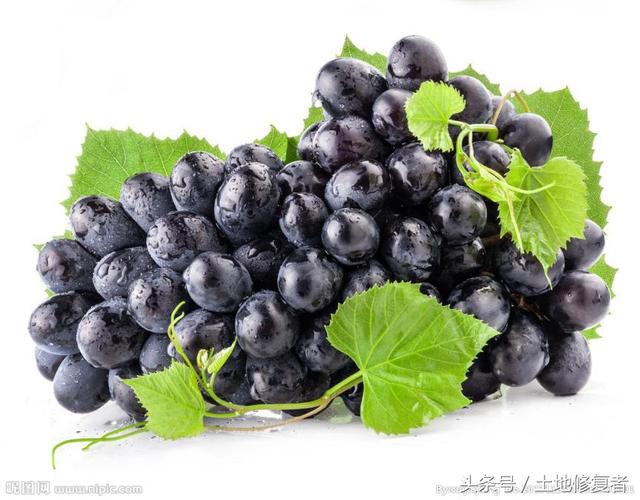
Grape carbon-based fertilizer
Medicinal value: traditional Chinese medicine believes that grape flat, taste glycine, into the lung, spleen and kidney meridians, has the effect of tonifying qi and blood, tonifying liver and kidney, invigorating body fluid, strengthening muscles and bones, relieving cough, relieving annoyance, tonifying qi and blood, and promoting urination. The contents of resveratrol in grape skins and proanthocyanidins in grape seeds are higher than those in other parts of grapes and most other fruit trees. They have high medicinal value and have become important nutritional and medicinal commodities in the world.
Economic value: wine is the most important processed product with grape as raw material. Wine has become a kind of high-grade consumer goods because of its cultural connotation. In China, consumption is rising in a straight line. In addition, the newly developed grape seed oil has attracted worldwide attention as an advanced nutritional oil for infants and the elderly, and an advanced health oil for high-altitude operators and pilots. Compared with other fruits, the variety of grape products is much richer. According to the daily needs, storage and transportation requirements of processed products, nutrition and health care and other factors, people also process grapes into raisins, grape juice, grape seed beverages, grape seed oil and other common products.

Grape carbon-based fertilizer
Build a garden
(1) the location of the vineyard should be located in a place with convenient transportation as far as possible to facilitate the outward transportation of products.
(2) the terrain should be expanded and flat (the mountain and hilly land should be properly reformed) and the drainage is good. Narrow gullies and valleys, due to lack of light and easy to accumulate cold air, vulnerable to frost, should not be chosen as vineyards.
(3) it has good water source and can be irrigated.
(4) the soil layer is thick, the soil is fertile and loose, and the water permeability and water retention are good.
(5) in windy places, it is best to choose sites with natural wind barriers (such as forests, buildings, hills) to build gardens, otherwise shelterbelts should be built.
(6) the planting area is divided into several planting areas (also called operation area) according to the slope aspect and slope of the topography. The planting area should be rectangular and the long side is consistent with the direction of the row, which is beneficial to drainage and irrigation and mechanical operation.
(7) the road system determines the road grade according to the total area of the garden and the topography. The main road should run through the central part of the vineyard, with a small area, and a large area can be crossed vertically and horizontally, dividing the whole garden into 4, 6, 8 areas. The branch road is located at the boundary of the operation area and is generally perpendicular to the main road. There is an operation road in the operation area, which is connected with the branch road, which is a temporary road and can make use of the open space between grape rows. The main road and slip road are fixed roads, and the roadbed and pavement should be firm and durable.
(8) the vineyard of the drainage and irrigation system should have a good guarantee of water source, make a good three-stage irrigation system of general irrigation canal, branch canal and irrigation ditch (irrigation canal and irrigation ditch can also be set up in a smaller area), and design the elevation of all levels of channels according to the specific drop of 5/1000, that is, the main canal is higher than the branch canal, and the branch canal is higher than the irrigation ditch, so that the water can flow in the channel. The drainage system is also divided into three levels: small drainage ditch, middle drainage ditch and total drainage ditch, but the elevation difference decreases gradually from small ditch to large ditch. Drainage and irrigation channels should be closely integrated with the road system, generally located on both sides of the road.
(9) Shelterbelt vineyard shelterbelt can improve the microclimate in the vineyard and prevent wind, sand, frost and hail. For more than 100 mu vineyards, the direction of the shelterbelt should be perpendicular to the main wind direction, and sometimes a secondary forest belt perpendicular to the main forest belt should be set up. The main forest belt is composed of 4-6 rows of trees and shrubs, and the secondary forest belt is composed of 2-3 rows of trees and shrubs. In the areas with serious wind and sand, the distance between the main forest belts is 300 to 500 meters, and the distance between the secondary forest belts is 200 meters. Set up 3-5 boundary forests at the boundary of the orchard. Generally, the forest belt covers about 10% of the total area of the orchard.
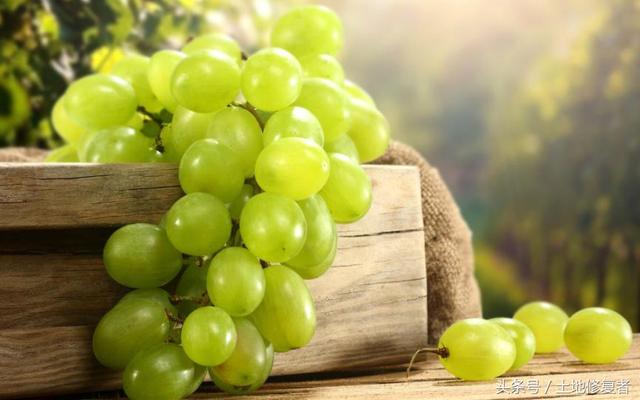
Grape carbon-based fertilizer
(10) others include frame type, frame material, row spacing and so on.
① rack type. The selection of shelf type should generally be determined according to the characteristics of varieties, local climate characteristics and local planting habits. Generally speaking, scaffolding is mostly used in the area north of the Great Wall in China, in order to have a wide row spacing for plants to take soil against cold in winter, and to prevent the root system from freezing damage due to a large number of soil extraction. However, in order to obtain rapid and high yield, cold-resistant rootstock grafted seedlings should be used as far as possible to narrow the row spacing. There are more hedges in the grape producing areas from the south of the Great Wall to the Yellow River basin. The single wall hedge is most used in production, which has the advantages of convenient management, good ventilation and light transmission and so on.
The setting of row spacing of ② plant. The plant-row spacing of grape varies with frame type, variety and climatic conditions. The grapes are pruned in the form of scaffolding with rows ranging from 4 to 10 meters apart. Varieties with strong growth potential and easy to form, such as longan, can take a large line spacing of 6m to 10m, and generally moderate varieties use a line spacing of 4m to 6m. The distance between plants is determined according to the number of main vines left on the shelf, and the distance between one plant and one vine is about 0.5 meters. According to the local climatic conditions, the plant spacing can be slightly larger in the areas with warm and long growing period, while in the areas with colder winter and shorter growing period, the plant spacing can be slightly smaller. When using the hedge, the row spacing is too wide, which is not conducive to the improvement of the shelf area per mu and the effective shelf surface. in the non-buried area or slightly buried area, the row spacing of the single hedge is equal to or slightly greater than the height of the frame, that is, between 2 and 2.5 meters. The line spacing is too narrow and the lower part of the shelf surface is not illuminated enough, so it becomes invalid. In the northern buried areas, the row spacing should be widened appropriately (generally 2.5-3 meters), so as to protect the soil from cold in winter. The height of the frame should be 1.8 to 2.0 meters, which is not conducive to management operations such as summer pruning.
Scaffolding and investment for ③ vineyards. The amount of frame material required varies with the frame structure. Inclined scaffolding: 60 cement columns per mu. The shape of the cement column is generally square or rectangular, with a side length of 8 cm to 12 cm. The length of cement column is generally 2 to 2.5 meters. Another 30 bamboo poles, No. 8 or No. 10 iron wire are needed, with a total of 10 tracks of about 1100 meters. The cost of the frame material is about 570 yuan. Connected horizontal scaffolding: 60 cement columns with 10 cm square per mu. Per mu need diameter 6.5mm steel bar 24m, No. 8 wire 180m, No. 10 wire 1100 m, shelf cost about 480yuan. Single wall fence: 66 cement columns with a height of 2 to 2.5 meters per mu and 800 meters of No. 8 or 10 iron wire. The cost of the frame material is 380,400 yuan. [6]
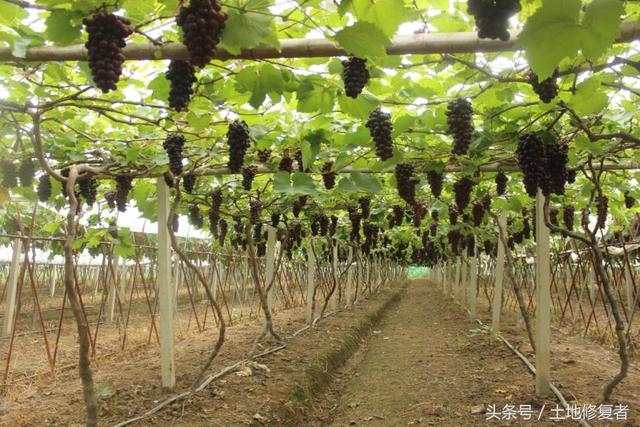
Grape carbon-based fertilizer
Dig trenches and plant
Grape is a perennial vine with a long life. It needs a large underground nutrient volume to grow and bear fruit in a fixed position for many years after planting. On the other hand, the young tissue of grape root system is fleshy, and its growth point extends downward and outward and stops when it encounters resistance. in order to make grape root occupy a larger nutrient area in the soil and achieve "deep roots and luxuriant leaves", planting ditches should be dug before planting grapes.
The main results are as follows: (1) it is better to dig planting ditch from autumn to frost in the north of China. Mountain vineyard to dig planting ditch to be appropriate deep and wide, generally deep and wide is 1 meter, flat land can dig 0.8 meters deep ditch. First set the line according to the line spacing, and then dig the ditch according to the width of the ditch, put the topsoil on one side, the core soil on the other side, and then backfill the soil. When backfilling the soil, first fill a layer of 20 cm of organic matter at the bottom of the ditch. Plain land, if the groundwater level is high, you can fill 20 cm of slag or garbage as a filter layer. Then fill a layer of topsoil, a layer of carbon-based nutrient microbial fertilizer and topsoil mixed filling. Backfilling should be improved according to different soil types, if the soil is sticky and properly mixed with sand, the soil structure should be improved to facilitate the growth and development of roots. When the backfill is 10 cm from the surface, the planting ditch is settled by irrigation, and then the seedlings are planted flat with the surface.
(2) to select qualified seedlings, lateral roots with more than 5 complete roots with a diameter of 2-3 mm are required. The thickness of the seedling is more than 5 mm, and there are more than 3 full buds on it. The seedlings should be disease-free and insect-free. If grafted seedlings, the type of rootstock should meet the requirements, and the marriage interface should be completely healed without cracks. Seedling planting period: it is suitable to plant seedlings in late March to early April in Beijing and in autumn in the south of the Yangtze River, generally from November to December. Before planting seedlings, the seedlings should be pruned properly, the dead piles should be cut off, and the excessively long roots should be cut by 20cm to 30cm. Then soak in clean water for 24 hours to make it fully absorb water. Dig holes when planting seedlings, spread the seedling roots around, do not circle the roots, cover the soil, and make the roots closely combine with the soil. Planting depth should not be too deep or too shallow, too deep ground temperature is low, it is disadvantageous to slow seedling; too shallow root system is easy to expose the ground and air-dry. Generally grafted seedlings covered with soil to the lower part of the marriage interface 1 cm, cutting seedlings to the original rhizosphere and planting ditch surface flush is appropriate. After planting, water is irrigated once, and then the soil is covered after the water seeps, so that the roots are not exposed. After planting seedlings in arid areas, bury them with sandy loam soil, cultivate the soil at a height of more than 2 cm above the top bud hole, prevent the bud eye from drying, and irrigate again every 5 days, so as to ensure the survival of the seedlings. It is best to use plastic film mulching, which is beneficial to improve soil temperature, preserve soil moisture and promote root growth.
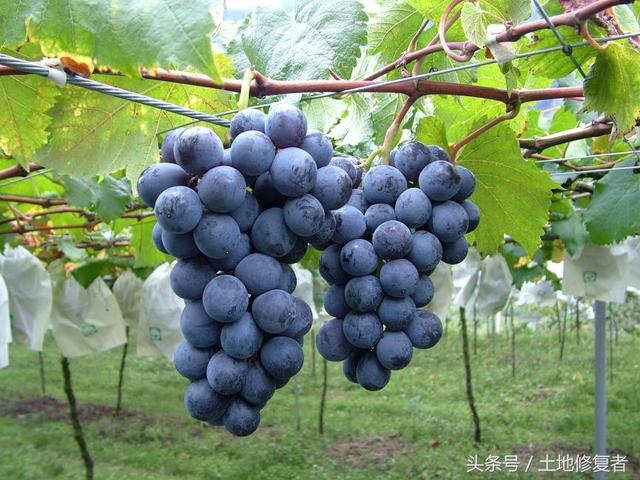
Grape carbon-based fertilizer
(3) the management technology of planting seedlings in the same year is very important to erase buds, fix branches and pick the heart of seedlings. When the bud eyes germinate, the grafted seedlings should wipe out the germination buds below the grafting interface in time, so as not to consume nutrients for the growth of tillers and affect the germination of scion bud eyes and the growth of new shoots. When the height of the seedling is 20 cm, the branches should be fixed and thinned according to the planting density. if the plant spacing is large, 2 branches will be left, otherwise, 1 branch can be left. Erase the excess branches and leave the strong branches without the weak branches, so that the nutrients are concentrated and supplied to the retained branches to facilitate the growth of the plant. When the seedling is 1 meter high, the coring of the main shoot and the secondary shoot should be carried out, first of all, the secondary shoot less than 30 cm from the ground should be erased. The upper secondary shoot generally leaves 1 leaf and 2 leaves for repeated coring, and the sturdy secondary shoot can leave 4 leaves for repeated coring control. Pick the heart again when the length of the main tip reaches 1.5 meters. The seedlings in Beijing area are well managed to reach about 2 meters in the first ten days of September, and the last coring of the main tip will be carried out. Through repeated coring, the thickening of seedlings, Lignification of branches and flower bud differentiation can be promoted. When cutting in winter, the main vine with a fully mature diameter of more than 1 cm is cut, and the length of the main vine is generally 1-1.2 meters. When the thickness of the secondary shoot on the main shoot is 0.5 cm, 1-2 buds can be left short, which can be used as the fruiting mother branch next year.
(4) the most important thing in the early high-yield cultivation technique is the first topdressing when the seedling height is 40cm to 50cm. Because the root system of planted seedlings is very small and the amount of nutrient elements used for absorption is small, it should be applied frequently and applied 2-3 times a year, once every 20-30 days, mainly carbon-based nutrient microbial fertilizer. After topdressing, it is necessary to irrigate, loosen the soil and weed in time. We should also pay attention to pest control.
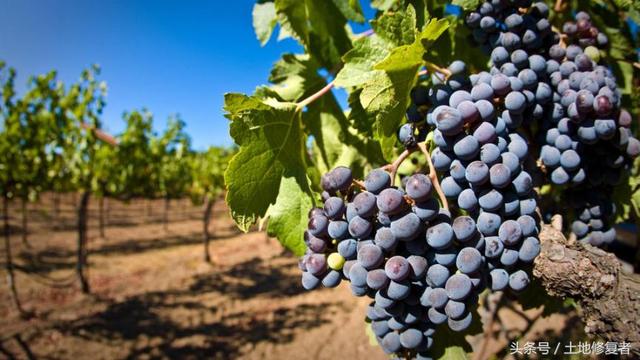
Grape carbon-based fertilizer
Fertilizer and water management
Fertilization: base fertilizer is the most important link in vineyard fertilization, which can be applied in autumn, from grape harvest to soil freezing. However, the production practice shows that the earlier the base fertilizer is applied in autumn, the better. The base fertilizer is usually based on carbon-based nutrient microbial fertilizer. Base fertilizer plays a good role in restoring tree potential, promoting root absorption and flower bud differentiation. There are two methods of applying base fertilizer: withdrawal of the whole garden and ditch application, most of the grapes in the scaffolding are removed, and then the fertilizer is buried with a spade or plough. The removal of fertilizer often causes the root system of grape to float, so it should be sprinkled into ditch or hole application as far as possible. Hedgerow grapes are often applied in trenches. The method is to open a ditch 50 cm away from the plant, 40 cm wide and 50 cm deep, each plant 2-5 kg of carbon-based nutritious microbial fertilizer, one layer of fertilizer and one layer of soil to fill the ditch in turn. In order to reduce the workload of fertilization, we can also use the method of interrow furrow fertilization, that is, in the first year, in the first, third and fifth year. Dig ditches and apply fertilizer in the second, fourth and sixth year. By digging ditches and applying fertilizer in turn, the soil of the whole garden was deeply turned over and improved. The amount of base fertilizer applied accounts for 50% and 60% of the total amount of fertilizer applied in the whole year.
Topdressing: applied in the grape growing season, generally high-yielding orchards need topdressing 2-3 times a year. The first topdressing was carried out when the early spring buds began to expand. At this time, the flower buds are continuing to differentiate, and the new shoots are about to begin to grow vigorously, requiring a lot of nutrients. Carbon-based nutrient microbial fertilizer is applied, accounting for 10% of the annual fertilizer consumption. 15%. The second topdressing was carried out in the early stage of young fruit expansion after Xiehua, mainly carbon-based nutrient microbial fertilizer, combined with spraying carbon-based humic acid water-soluble fertilizer developed by Professor Liu Cunshou. This topdressing can not only promote the expansion of young fruit, but also conducive to flower bud differentiation. The third fertilization was carried out at the initial stage of fruit coloring, and the amount of fertilizer applied accounted for about 10% of the amount of fertilizer used in the whole year. Topdressing application method: can be combined with irrigation or rainy days directly applied to the soil of the root of the plant. In addition, extra-root topdressing can also be carried out, that is, carbon-based humic acid water-soluble fertilizer can be diluted and sprayed on the plant to facilitate leaf absorption. Extra-root forced fertilizer can also be combined with the prevention and control of diseases and insect pests when spraying together to save labor. Modern grape fertilization mainly depends on the analysis of mineral elements in grape leaves. When the composition of certain elements in grape leaves is lower than the lower limit of the appropriate range, this element should be supplemented appropriately.
Grape carbon-based fertilizer
Water management: grape growth needs a lot of water, such as several key periods from sprouting to pre-flowering, and timely watering from fruit setting to fruit coloring when dry. In rainy days, soil moisture ditches should be cleaned in time to eliminate stagnant water.
Flower and fruit management: artificial pollination can be used to increase fruit setting rate, increase fruit grain, and improve yield and quality. The hairy rabbit skin nail was used to make a pollination brush on the wood. When there was no dew in the early morning, the brush was used to pull on the grape inflorescence to help pollinate.
Flower thinning and fruit thinning: for Jufeng and other varieties, the methods of thinning inflorescences, pinching accessory inflorescences, flower buds and young fruits can improve fruit quality. Inflorescence thinning is completed about half a month before flowering. Pinch off the ends of inflorescences 1/5 to 1/3, sparse the poorly differentiated accessory inflorescences. Thinning buds are carried out 5-10 days before flowering and gently shake inflorescences with hands to make some buds fall off. The thinning of young fruit is carried out after physiological fruit drop, and only about 50 grains per panicle are left for Jufeng and other large-grain varieties.
Fruit bagging: generally, about 40 days after flowering, bagging is carried out to control fruit diseases and insect pests when the fruit is the size of soybeans. Seven days before bagging, use 50% carbendazim wettable powder 800 times 1000 times, or 80% Dasheng Mmur45 wettable powder 600 times 800 times, or 70% methyl thiophanate wettable powder 800 times 1000 times, etc. a comprehensive spray of insecticide fungicide. Choose bagging before 10:00 in the morning and after 4pm every day to prevent the fruit from being burned by high temperature at noon.
Shaping and pruning: the plastic courtyard horizontal scaffolding can be fan-shaped with more than 1m trunk height, and multiple main vines are planted on the trunk extension vine on the surface of the scaffolding.
Summer pruning: wipe buds and remove tendrils, wipe off too many useless shoots in the early growth stage, and tie them to iron wire when the new shoots grow 30cm or so, so as not to be blown off by the wind, and remove tendrils at the same time. Pick the heart and go to the auxiliary shoot, pick the heart about 5 days before flowering to improve the fruit setting rate. Generally leave more than 5 leaves on the ear, pick the top shoot. After coring, the accessory shoots began to sprout, all the accessory shoots under the ear were removed, and 2 leaves were left above the ear before picking the heart. After re-coring, the secondary secondary shoots occur again, and the secondary secondary shoots or the third secondary shoots sent out later continue to be coring by the same method. More leaves can be left on the secondary shoots at the top of the main shoot.
Winter pruning: winter pruning should be carried out after deciduous leaves to February of the following year. There is often a bleeding stream after February and should not be trimmed. When pruning, the branches with full growth, good maturity and no diseases and insect pests should be left on the main vine as the fruit mother branch. Results the mother shoots were pruned with 2-4 buds for short shoots, 5-7 buds for middle shoots, and more than 8 buds for long shoots. Prosperous varieties such as Jufeng often use medium and long shoots as the main, and long, medium and short shoots are pruned together. Strong branches can stay long, thin long branches can stay short. Leave some short shoots in the lower part of the main vine and lateral vine as preparatory branches to renew the vines.
Grape carbon-based fertilizer
Pest control
The first stage: dormant period to bud germination stage. During the dormant period, clear the garden, cut off dead branches, stiff fruits, etc., clean up fallen leaves and concentrate on burning or deep burial, so as to reduce the source of overwintering disease. Spray 3 °Be stone sulfur mixture plus 0.2% ~ 0.3% silicone agricultural auxiliaries during bud germination to eliminate the source of overwintering disease.
The second stage: from the growing period of new shoots to before flowering. Sprayed with Bordeaux liquid of 1V / 0.5V / 200x, mainly preventing and curing black pox and Botrytis cinerea, harming young leaves, tender shoots and inflorescences.
The third stage: after falling flower to the early stage of fruit coloring. After falling flowers, spray 3000-fold Shuijiaoding liquid twice to control the damage of grape wing moth larvae to tender shoots. Alternately sprayed every 10 to 15 days with 0.5 Bordeaux solution or 1000 methyl topiramate solution, triazole fungicides and methoxyacrylate fungicides can also be used to prevent black pox, white rot, anthrax and so on. When there is more overcast, rainy and low temperature in the early stage of growth, the leaves with downy mildew can also be sprayed with 800 times 25% metalaxyl solution, enyl morpholine can be used to control the disease at the initial stage, and 2000 times of imidacloprid can be sprayed to control the harm of leafhoppers before and after flowering. Bagging was carried out to control fruit diseases and insect pests when soybeans were in the middle and last ten days of June.
The fourth stage: the fruit coloring stage to the fruit ripening stage. Artificial killing was used to control diamondback moth larvae. Spray 1VRV 200 times Bordeaux liquid to control downy mildew, anthrax, gray mold, white rot and so on.
The fifth stage: fruit harvest period to dormancy period. The second generation of diamondback moth larvae can be sprayed with 3000 times fast killing liquid when the larvae are damaged. When there are more overcast and rainy days in autumn, we should focus on the prevention and control of downy mildew, which can be sprayed with 200 times Bordeaux liquid.
The standard is arranged by Qin Shuqiao Agriculture. Welcome to share. Readers who want to know more can enter L581220L and note "planting" to learn more.
- Prev
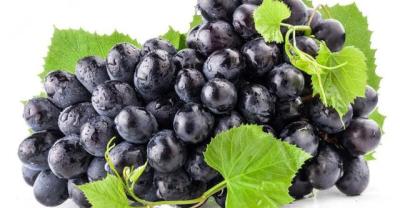
Home fengshui plants: plants suitable for growing at home
As people pay more and more attention to the living environment, many people will plant some plants indoors to increase their vitality and fengshui. But there are too many varieties of plants, and.
- Next
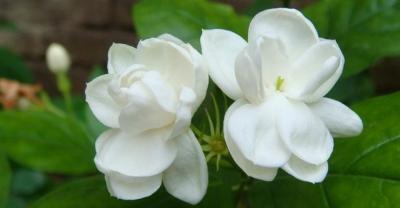
Matters needing attention before sowing peanut in peanut planting
Click to follow us and update agricultural planting technology every day to help you get rich and mildew-proof. After the peanut seed is covered by mildew, the germination energy decreases and the seedling emerges.
Related
- Fuxing push coffee new agricultural production and marketing class: lack of small-scale processing plants
- Jujube rice field leisure farm deep ploughing Yilan for five years to create a space for organic food and play
- Nongyu Farm-A trial of organic papaya for brave women with advanced technology
- Four points for attention in the prevention and control of diseases and insect pests of edible fungi
- How to add nutrient solution to Edible Fungi
- Is there any good way to control edible fungus mites?
- Open Inoculation Technology of Edible Fungi
- Is there any clever way to use fertilizer for edible fungus in winter?
- What agents are used to kill the pathogens of edible fungi in the mushroom shed?
- Rapid drying of Edible Fungi

